Nowadays, we’re beginning to discover that much of our back pain isn’t due to trauma or injury but rather due to our poor habits. Bad posture has become ridden in our society as we become more dependent on technology. Most of us aren’t aware of the havoc we wreak on our backs just by staring at our screens all day. Upper back and neck pain are becoming more common complaints that modern medicine doesn’t have a straightforward solution for. What people don’t know is that a more natural form of pain management for upper back pain has been available to us for thousands of years. Many people are now discovering that acupuncture and acupressure from traditional Chinese medicine (TCM) is the way to go for treatment. In this article, we’ll go over what these treatments are, how you can obtain them, and the acupressure points for upper back pain you need to target for relief.
What Is Acupuncture?
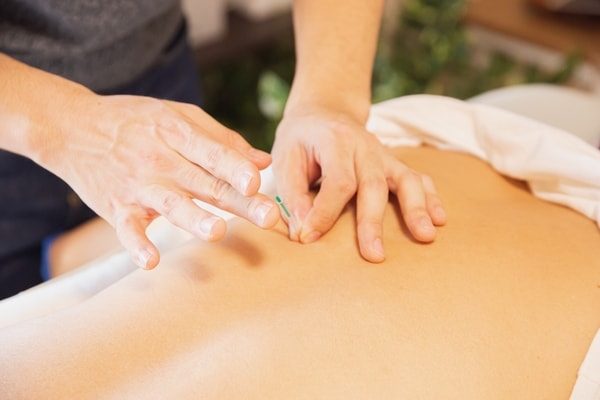
Acupuncture is the TCM practice of inserting needles into areas around the body called “acupoints”. Acupoints lie along meridians, which are energy channels that flow throughout the body. When you feel sick or are suffering from pain, it is believed that the energy in your body is blocked up. Acupuncture helps you feel better by stimulating the blockages with the needles and letting the energy flow freely throughout your body again.
Acupuncture treatments are performed by licensed professional acupuncturists. While Western physicians highly recommend acupuncture as a complement to treatments, going to an acupuncturist is nothing like your average doctor’s visit. You’ll find that they’ll want to learn about you not just on a symptom level but also as a whole person. As you tell them your story, they look for patterns and how they have affected your entire body. From there, they’ll determine a treatment plan for you that includes the frequency and length of sessions as well as the acupressure points for upper back pain they’ll treat.
You should be aware that while acupuncture is very safe if you’re treated by a professional, things can turn south if you’re in the hands of anybody else. Make sure to do your research. However, it’s common for patients to experience bruising, minor bleeding, and soreness after an acupuncture session.
Does Acupuncture Work For Upper Back Pain?
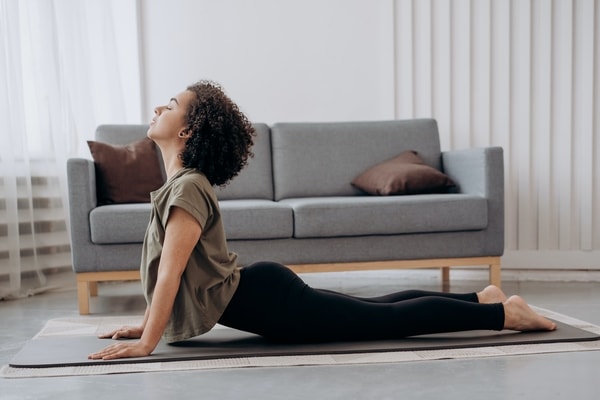
When an acupuncturist is looking to treat upper back pain, there are certain patterns that are most common, such as trauma, emotional management (i.e. anger and stress) issues, and cold environments. However, it doesn’t necessarily mean that any of these patterns are responsible for upper back pain, even if there is a correlation. Once a diagnosis has been determined, they’ll treat the acupressure points for upper back pain. These are usually located around the upper back, head, shoulders, and neck.
After reading this far, you’re probably curious if acupuncture even works for upper back pain. Well, the truth is that it might. Research on acupuncture is still in its infancy, but initial studies show that acupuncture is effective for chronic upper and lower back pain. Patients in these studies reported significant reductions in their back pain, but it’s still unclear whether this pain relief is due to the mechanism of acupuncture itself or the placebo effect. Even though these studies look promising, it doesn’t mean that it could work for everyone. Since it is relatively low risk, there’s no harm in trying it out if you’ve been experiencing chronic upper back pain and have tried every other treatment out there.
What Is Acupressure?
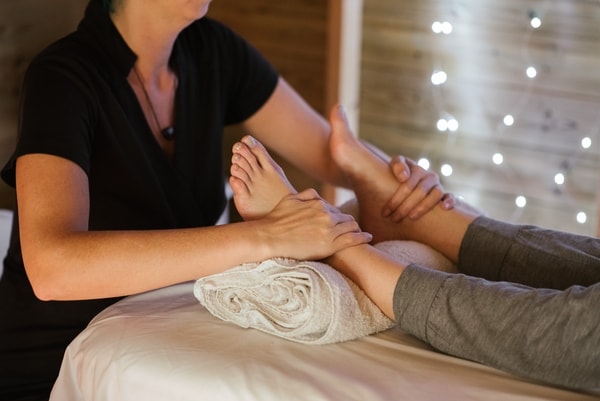
While acupuncture is the most well-known, it isn’t the only way you can treat your upper back, neck, and shoulder pain. Alternatively, you can undergo acupressure for upper back pain. Acupressure works along the same lines as acupuncture, but instead of needles, you are being massaged at certain acupressure points for upper back pain. Applying targeted pressure to acupoints is believed to relieve muscle tension and promote blood circulation to those areas. What sets it apart from acupuncture is that it can be done by yourself at home or with a professional.
But is it effective for upper back pain? The research is lacking, but it shows potential. A study from 2019 found that auricular acupressure improved neck disability and cervical range of motion in those who suffered from chronic neck pain. Another from 2018 showed that acupressure is effective on “nakchim”, a disorder that causes neck pain and stiffness not otherwise due to trauma. More evidence is still needed on both acupuncture and acupressure to conclusively determine their effectiveness on upper back pain.
How To Relieve Back Pain With Acupressure
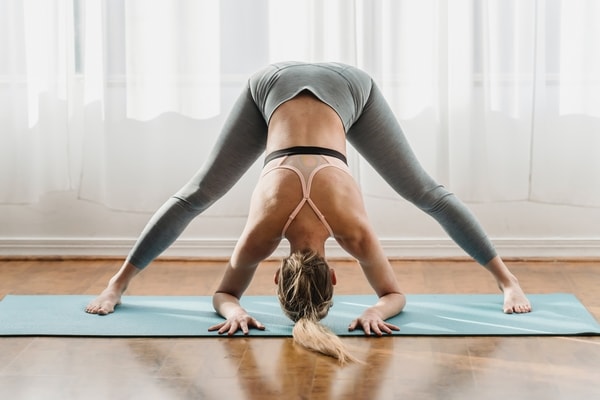
On other parts of the body, acupressure is normally done with your fingers. But when it comes to the upper back, you might have an easier time having another person do it or by using an acupressure mat.
If you’re going to get someone else’s help, below are some tips both you and your assistant can use when performing acupressure for upper back pain.
- Find an area where you can fully lay down on your stomach. Not only will you be comfortable, but your assistant will also appreciate having a complete view of your back.
- Relax. Do what you need to beforehand to destress and unwind. This can be anything from taking deep breaths to meditating.
- Have your assistant massage each acupoint. After they’ve studied the acupressure points for upper back pain below, have your assistant press firmly on each point and massage in a circular motion for about 30 seconds to 1 minute. Repeat for each point as frequently as you’d like.
Acupressure mats are a great alternative if you don’t have another person to help you. They are made of hundreds of plastic points that apply pressure to several acupoints on your back rather than targeted acupressure. Follow our strategies below to get optimal results from your acupressure mat.
- Choose a hard and flat surface. It may be tempting for you to lay it on your bed or sofa, but it won’t help you as if you laid it on the floor.
- You are going to feel uncomfortable when you first use it. The spikes on the mats are sharp and can even be painful for several minutes. This is normal for first-time users, and your body should eventually get used to it. If the pain persists, try putting a shirt or towel between you and the mat.
- Move around carefully. Even if you do get used to it, the spikes can cut through your skin if you’re not careful when moving around.
What Pressure Point Relieves Back Pain?
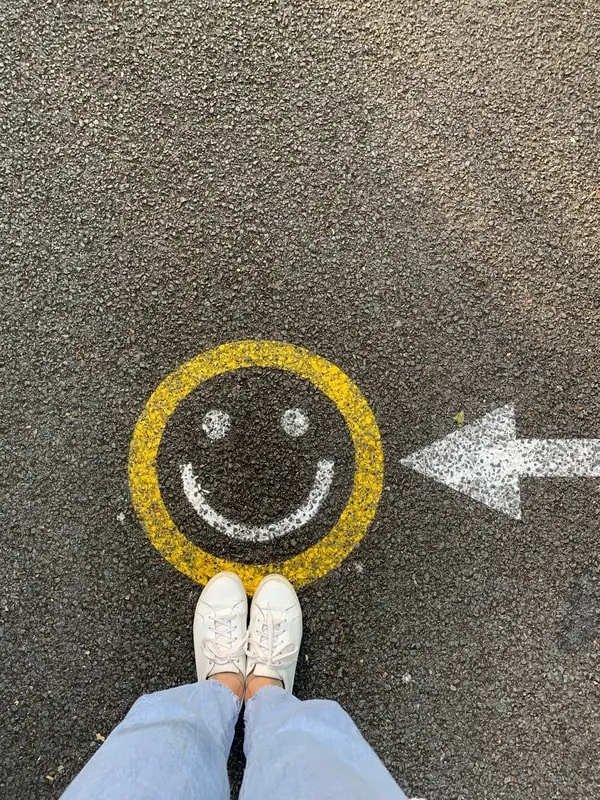
Acupoint: Bl-43 (Other Names: Urinary Bladder-43/Gao Huang Shu/Vital Region Shu)
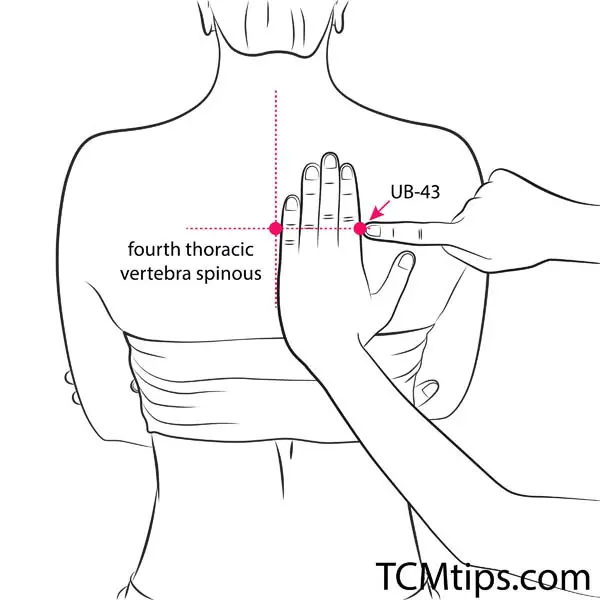
Bl-43 or UB-43, also known as “gaohuangshu” or “vital region shu”, is located about four fingers lateral to the fourth thoracic vertebra spinous process. It is extremely effective for aches in the shoulder and upper back because it tonifies qi. This strengthening effect makes the UB-43 acupuncture point a prime area for treating weight loss, lung problems, and general weakness.
Acupoint: LU-1 (Other Names: Lung-1/Zhong Fu/Middle Palace)
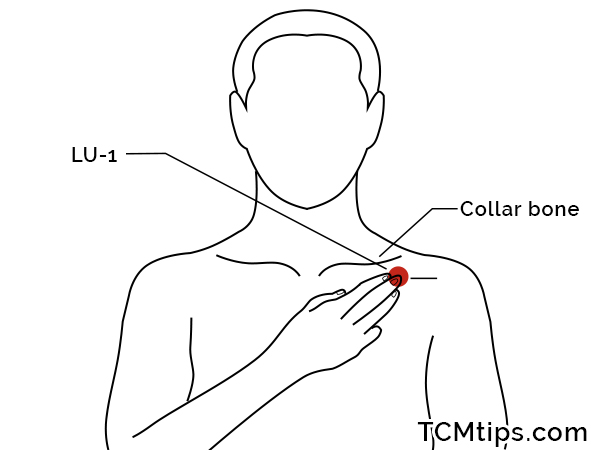

LU-1, also known as “zhongfu” or “middle assembly”, is located on the upper chest at about 1.5 cun below the collar bone. It works indirectly to relieve local pain points in the chest, shoulders, and back. However, it is mainly known to be one of the most effective acupressure points for cough and other lung ailments, such as asthma and wheezing.
Acupoint: SI-11 (Other Names: Small Intestine-11/Tian Zong/Heavenly Gathering)
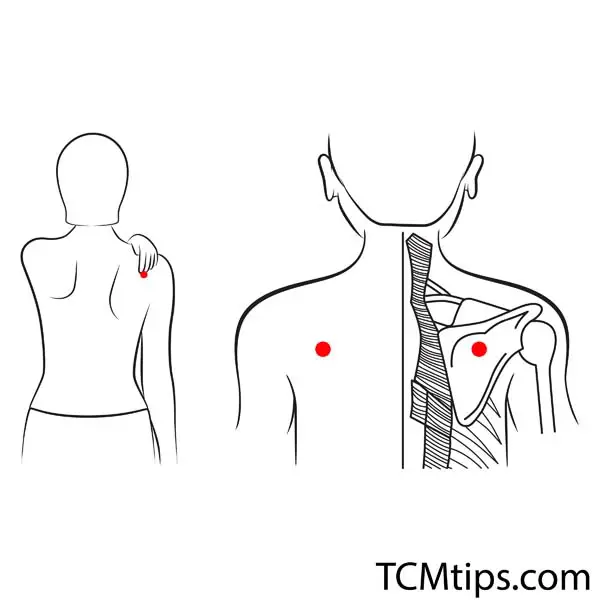
SI-11, also known as “tianzong” or “heavenly gathering”, is located slightly above the shoulder blade’s center and is level with the fourth thoracic vertebra. Alternatively, you can also rest your hand over the shoulder as shown in the diagram above. Your middle finger should be pointing at the acupoint. You can treat this acupoint for shoulder and arm pain. Professionals also use SI-11 in reflexology for sciatica.
Acupoint: LI-4 (Other Names: Large Intestine-4/He Gu/Joining Valley)
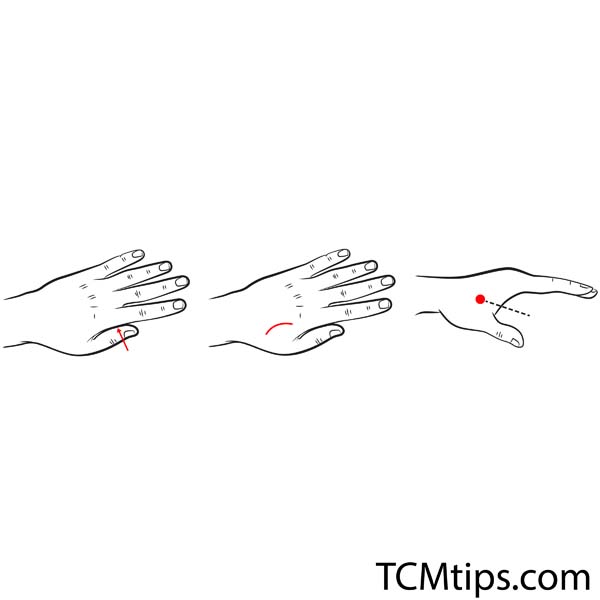
LI-4, also known as “he gu” or “junction valley”, is located on the muscle between your index finger and thumb. This acupoint helps relieve pain in the body, especially in the head and neck areas. Along with upper back pain, it is also one of the acupressure points for trigeminal neuralgia.
Acupoint: SI-3 (Other Names: Small Intestine-3/Hou Xi/Back Stream)
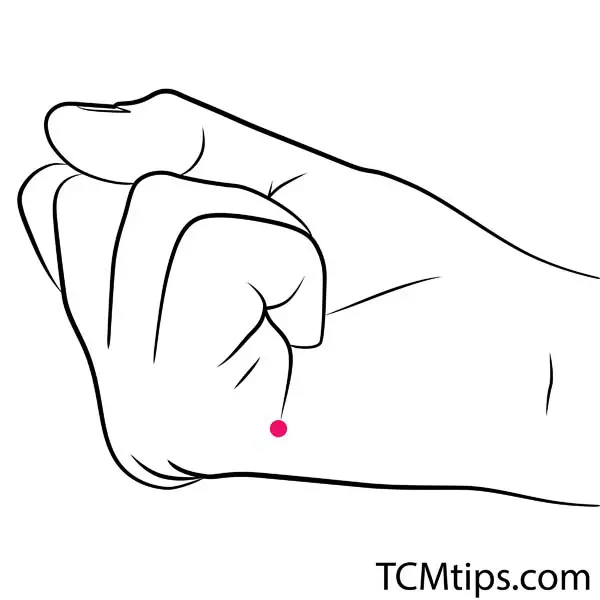
SI-3, also known as “houxi” or “back stream”, is located right at the crease of the fifth metacarpophalangeal joint. Treat this acupoint if you are experiencing head and/or neck pain and stiffness. It is a shu-stream point, which is where the qi starts to pour down the meridian and is known to alleviate pain.
Acupoint: LI-10 (Other Names: Large Intestine-10/Shou San Li/Arm Three Miles)
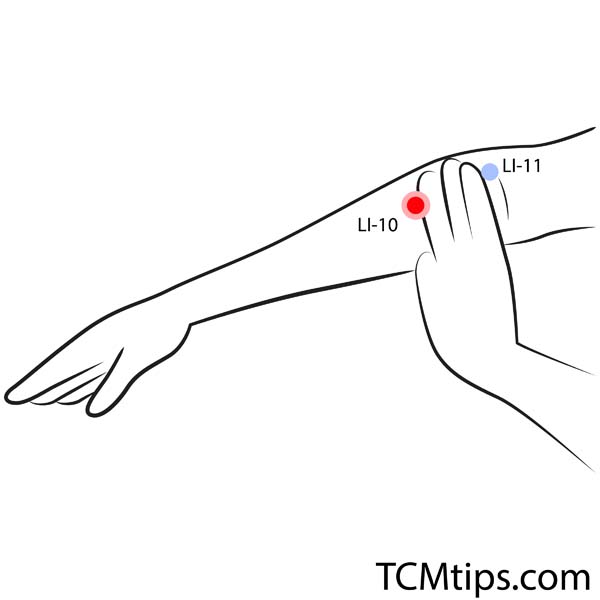
LI-10, also known as “shousanli” or “arm three miles”, is located three fingers below the elbow crease. It is used for stiff neck and shoulder pain because it tonifies qi and activates the meridian to stop pain. It is also commonly used in acupuncture and tennis elbow.
Acupoint: GB-21 (Other Names: Gallbladder-21/Jian Jing/Shoulder Well)
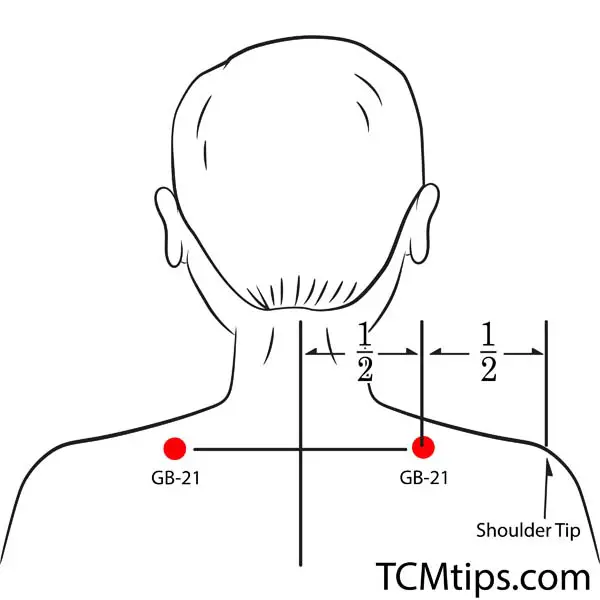
GB-21, also known as “jianjing” or “shoulder well”, is located midway between the spine and shoulder tip. Target this acupoint for relief of pain, stiff neck, shoulder tension, and headaches. It is also one of the best acupressure points for the eyes.

Try our Anti-Aging Gua Sha Tool designed to bring out your skin’s natural glow.
Best Gua Sha Product- Anti-Aging: The tool is designed to target 11 specific aging signs such as wrinkles and sagging skin. By following the 7-step routine, users can improve skin firmness and reduce fine lines naturally.
- Enhances Skincare Routine: It works effectively with serums and lotions, boosting absorption and efficacy of skincare products.
- Visible Skin Improvement: Users can expect a smoother complexion, reduced puffiness, and a more youthful appearance.
 P. Sze
P. Sze 
















